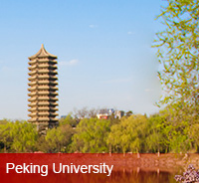Rational Catching-up Powered by Dual Circulation
May 12-2021
To achieve the Dual-Circulation new development pattern, internally it’s requisite to further sort out the relationships between the government and the market and make good use of the critical role of the market in resource allocation; internationally, what’s important is to make good use of Chinese wisdom and work for an orderly and rule-based competitive landscape in a peaceful context, says Prof. Yao Yang, Dean of the NSD, in an exclusive interview with PKU Financial Review.
The Chinese economy needs to grow at an annual rate of 3.7% over the next 30 years - up to the year 2049 – if goals laid out in the report of the 19th National Congress of the Communist Party of China (NCCPC) are to be met. Seemingly a low speed, it’s not without challenges, for China’s capital accumulation is going down while its capital depreciation is ramping up, meaning that more savings will be spent on repairing roads and bridges. Foreseeably, China’s future economic growth will rely more on domestic tech innovation, says Prof. Yao.
China can still claim three advantages: tremendous domestic market that’s conducive to continuously diluting innovation costs; immense room for urbanization, whose rate can be expected to rise from current level of 60% to 75-80% within the next 15 years, thus further reinforcing the agglomeration effects of population and industries; huge potential for green development, which will give rise to many high-tech environmental protection enterprises.
Meanwhile, daunting challenges stand in the way. The first one is the changes that have taken hold of the international environment. A nonnegligible fact is that the strategic opportunity period has drawn to and end for China; nowadays between China and the US there’s more competition than cooperation. Consequently, China will find a curtailed leeway in introducing innovation from abroad. Hence, it’s important to make proactive use of the Chinese wisdom and work for an orderly, rule-based competitive landscape in a peaceful context – what’s to avoid is the vicious competition that were rife during the Trump Administration.
Another challenge lies in the aging of the Chinese population. By 2050, Chinese elderlies will have accounted for 30% of the total population, a ratio higher than Japan’s current one. The social security system might be pushed to the breaking point. One more challenge has to do with the further reforms of SOEs and the financial sector. Whilst private firms are the main drivers of innovations, state-owned financial institutions are still in firm control of the financial sector. Such a mismatch significantly pulls down innovation efficiency and vitality, says Prof. Yao.
On the international stage, China should leave behind the old positioning of being a follower and try to become a rule maker. Though the previous round of globalization has resulted in many successes, its over-emphasis on uniformity has also bred myriad issues. A recalibration of globalization, as China advocates, is about considering and allowing for some specificities of every individual country. Seen from this perspective, China shouldn’t be shy to spell out its proposals in the international arena; nor should it be impulsive in repudiating others’ requests. Rather, some space of discussion should be kept for the negotiation table. The international rules formed through such a process might be the compromises reached between traditional rule makers and emerging economic bodies.







